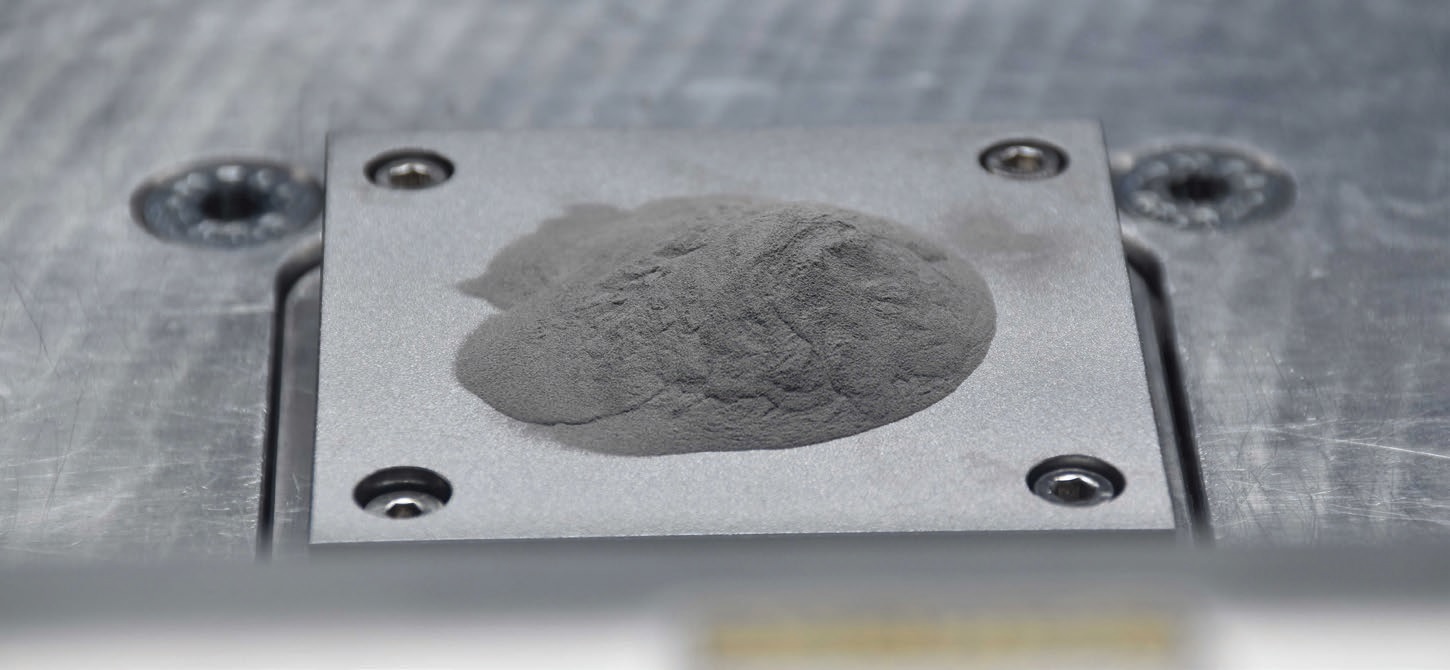Manufacturing of aluminum alloys by 3D printing
Dr. Neil Canter, Contributing Editor | TLT Tech Beat January 2018
Researchers have successfully 3D printed 6061 and 7075 aluminums by adding nanoparticle grain refiners to the metal powders prior to processing.
KEY CONCEPTS
•
Widely used 6000 and 7000 series aluminum alloys cannot be 3D printed because the process leads to cracks forming in the metal’s microstructure.
•
This difficulty has been overcome through the addition of nanoparticle grain refiners to metal powders prior to processing.
•
Aluminum alloys prepared with the nanoparticle grain refiners displayed properties consistent with wrought alloys prepared conventionally.
INTEREST IN USING ADDITIVE MANUFACTURING or 3D printing is growing for a variety of applications. One area that is gaining increasing attention is metalworking where the common technique of flooding the metal part with coolant leading to metal removal is a subtracting process.
In contrast, 3D printing involves the systematic building of metal components by continually adding metal layers. The process starts by heating metal alloy powders to facilitate the layering technique followed by solidification. Hunter Martin, technical staff member at HRL Laboratories, LLC, in Malibu, Calif., says, “Building a metal structure layer by layer is analogous to welding. This approach is done through the use of a laser or electron beam to melt alloy powders in a technique known as rastering.”
In a previous TLT article, an ARCAM electron beam melting system was developed to control the microstructure and properties of parts prepared from Inconel 718 (
1). The researchers indicated that this process should enable 3D-printed parts to be designed to meet specific performance requirements.
Alloys that are easily welded can be 3D printed. Examples include the titanium alloy (TiAl6V4) that is widely used in aerospace applications. Aluminum alloys are becoming increasingly important as automakers seek to lower the weight of vehicles to improve fuel economy. Two of the most popular alloys used are 6061 and 7075 aluminums.
Both of these types, representative of 6000 and 7000 series wrought aluminum alloys, are not amenable to 3D printing. Martin says, “In attempting to weld one 7075 aluminum plate to another, large cracks form between the materials leading to microstructures with columnar grains and cracks that are present in successive print layers. The resulting metal suffers from inferior physical and mechanical properties such as strength, fatigue life and fracture toughness.”
The microstructure of these materials contains dendritic structures similar to snowflakes. These structures form due to a break down at the solid-liquid interface.
Finding a procedure to 3D print aluminum alloys represents a good demonstration platform for other non-weld-able alloys. Martin says, “Aluminum alloys are the worst-case scenario for 3D printing because they exhibit a large solidification range that is difficult to weld. We consider 6061 aluminum to be the most difficult alloy to weld with 7075 a close second.”
If an approach can be found to 3D print with 6000 and 7000 series aluminums that lead to less material shrinkage and a smaller temperature range, then this will apply to other alloys. Such an approach has been found.
NANOPARTICLE GRAIN REFINERS
Martin and his colleagues successfully 3D printed 6061 and 7075 aluminums by adding nanoparticle grain refiners to the metal powders prior to processing. He says, “We found that adding the nanoparticle grain refines facilitates the nucleation of new aluminum grains. The result is the formation of a fine equiaxial grain structure that minimizes the formation of columnar grains and cracks. In effect, we used a 70-year-old nucleation theory to solve a 100-year-old problem.”
Figure 1 shows an image of an aluminum alloy powder mixed with nanoparticles that is being readied for 3D printing.
 Figure 1. 3D printing of 6000 and 7000 aluminum alloys has been achieved by the addition of hydrogen stabilized zirconium particles to the powdered aluminum alloy prior to processing. (Figure courtesy of HRL Laboratories, LLC.)
Figure 1. 3D printing of 6000 and 7000 aluminum alloys has been achieved by the addition of hydrogen stabilized zirconium particles to the powdered aluminum alloy prior to processing. (Figure courtesy of HRL Laboratories, LLC.)
The researchers developed a database to determine the right alloy that would work with the aluminum alloys. More than 4,500 powder, nanoparticle combinations were analyzed before the researchers found that hydrogen stabilized zirconium particles represented the best fit because they result in the formation of a favorable Al
3Zr nucleation phase.
Martin says, “We used the database to find the right type of nanoparticle grain refiner to induce epiaxial nucleation that helps all of the atoms to line up in the same space lattice with the appropriate crystal structure.”
Aluminum alloys were prepared by adding pre-alloyed spherical aluminum powders with an average powder size of 45 microns that were coated with 1 volume percent of hydrogen stabilized zirconium nanoparticles. Additive manufacturing was accomplished using standard machine parameters using selective laser melting.
The nanoparticle functionalized aluminum alloys were evaluated through microstructure analysis and physical properties testing. Crack-free microstructures with grain sizes estimated to be 5 microns were found from the analysis of the nanoparticle functionalized aluminum. This represents a 100 times reduction in grain sizes compared to unmodified aluminum powder.
Tensile testing indicated that the nanoparticle functionalized alloys displayed properties consistent with wrought alloys prepared by conventional techniques. For 7075 aluminum, the ultimate strength difference and yield strength were not within acceptable ranges. Martin says, “Compositional analysis of the nanoparticle functionalized alloys showed that zinc and magnesium were lost in the 3D printing process due to evaporation. We will need to add these two metals back into the alloy but have not yet optimized the parameters for 3D printing.”
Future work will include optimization of this process and the examination of other alloys. The successful use of this technique for the most problematic alloys provides optimism that this approach will work with other alloys that are difficult to weld.
Additional information can be found in a recently published article (
2) or by contacting HRL Laboratories at
additive@hrl.com.
REFERENCES
1.
Canter, N. (2015), “3D printing: Improved structure and property control,” TLT,
71 (3), pp. 16-17.
2.
Martin, J., Yahata, B., Hundley, J., Mayer, J., Schaedler, T. and Pollock, T. (2017), “3D printing of high-strength aluminum alloys,”
Nature 549 (7672), pp. 365-369.
 Neil Canter heads his own consulting company, Chemical Solutions, in Willow Grove, Pa. Ideas for Tech Beat can be submitted to him at neilcanter@comcast.net
Neil Canter heads his own consulting company, Chemical Solutions, in Willow Grove, Pa. Ideas for Tech Beat can be submitted to him at neilcanter@comcast.net.